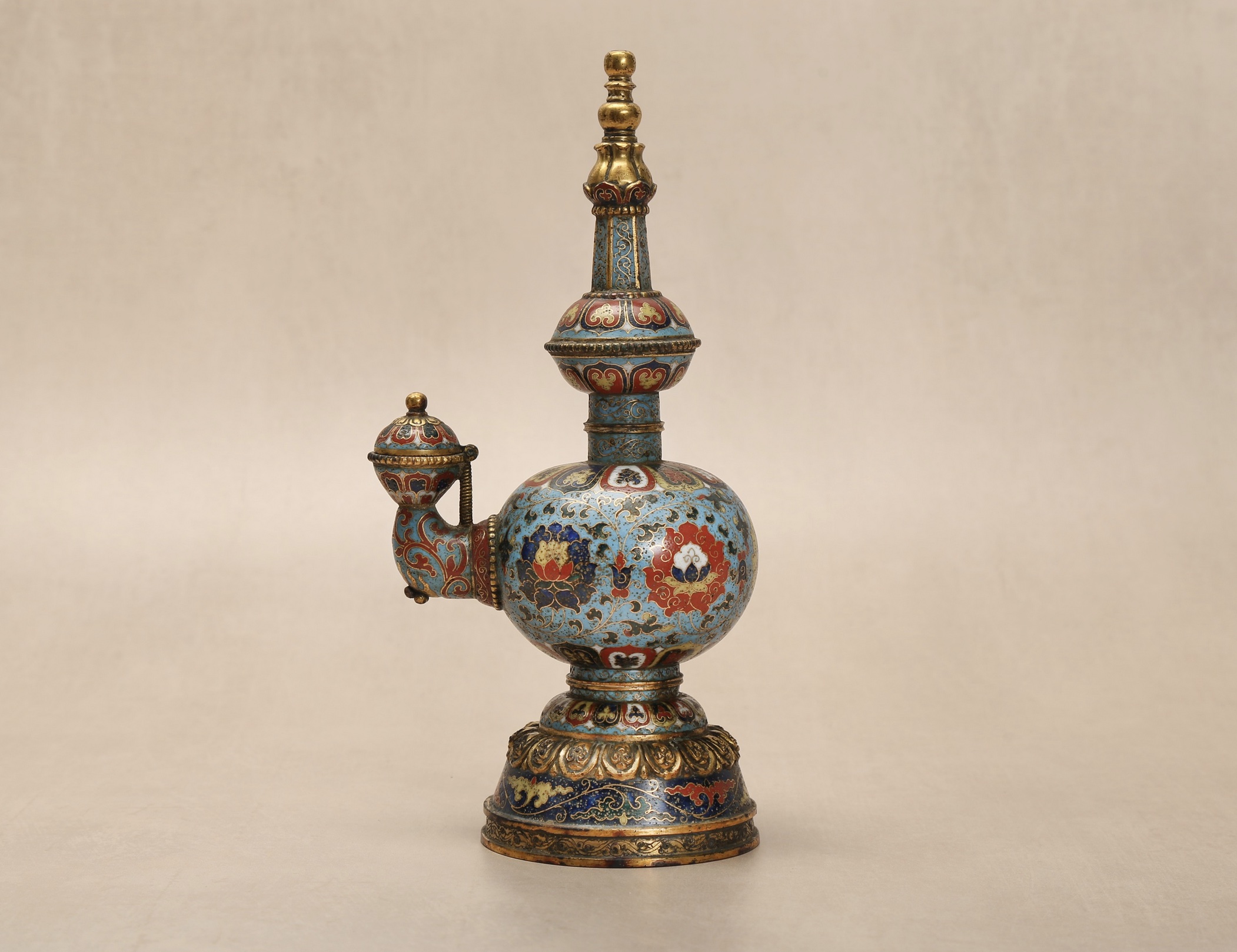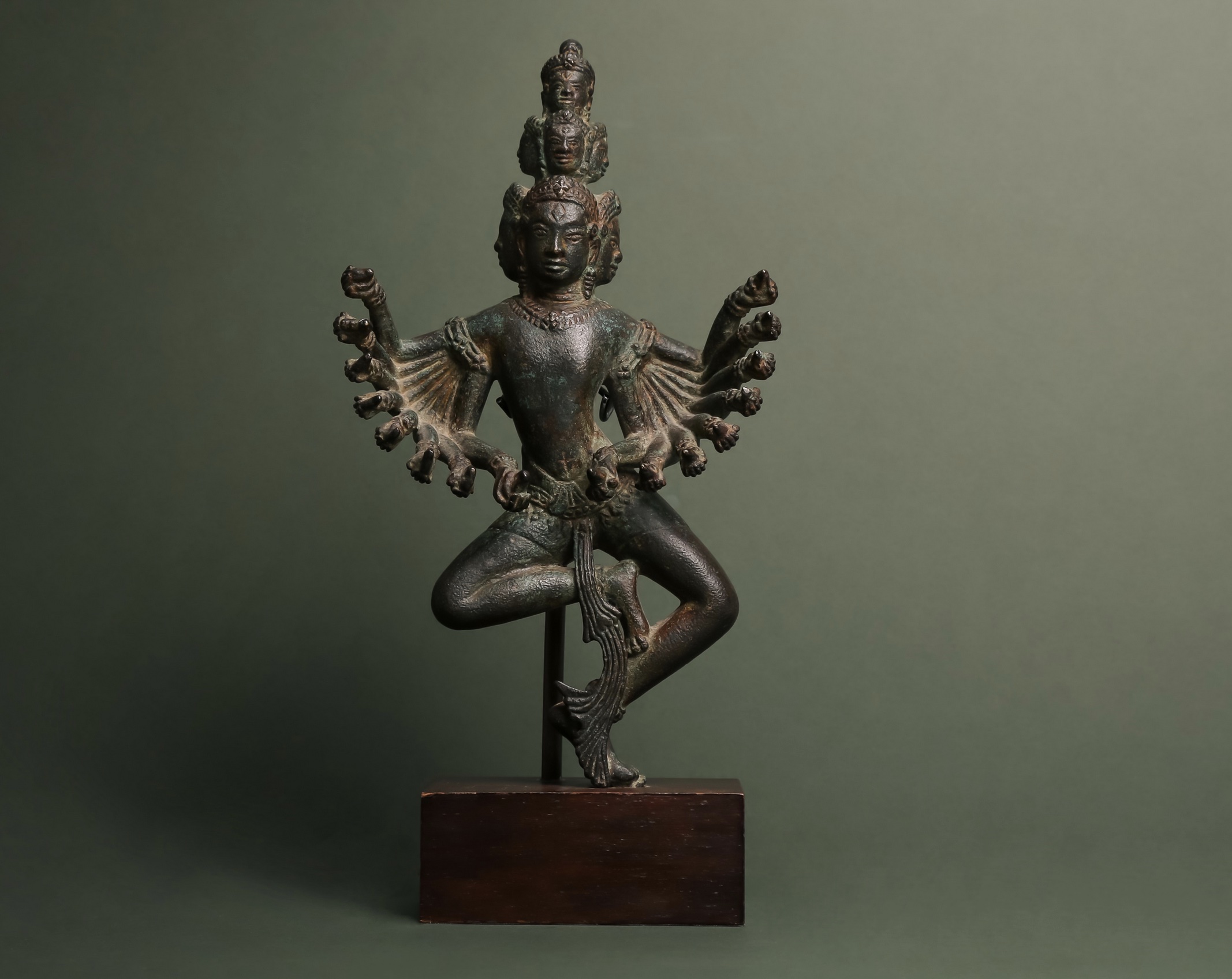Ming Dynasty water vessel leads sale
 A rare example of Ming dynasty cloisonne is the highlight of an upcoming sale at Chiswick Auction this month.
A rare example of Ming dynasty cloisonne is the highlight of an upcoming sale at Chiswick Auction this month.
The 15th or 16th-century bronze and enamel ritual water vessel or kundika comes for sale from a private collection in France with provenance to Robert Rousset (1901-1982), an employee of the Compagnie de la Chine et des Indes. It is guided at £30,000–£40,000 in the auction house’s Asian Art sale on May 19.
Following Indian prototypes, kundika were used by monks to wash their mouths after meals. Filled through the hinged spout with purified water, the contents were sprinkled out of the top. The polychrome lotus scroll decoration to this example is a common ornament on Chinese cloisonne of this period and especially appropriate for a vessel connected with Buddhist ritual. The gilt underside is incised with the protective visvavajra motif.
A much earlier Khmer figure from the 12th or 13th century depicting the 16-armed guardian deity Hevajra is estimated at £8,000–£12,000. This 23cm high figure was formerly in the collection of Himalayan, Indian and Southeast Asian works of art assembled by US specialist Nik Douglas (1944-2012). After living in the Himalayas for a decade, he organised numerous exhibitions of Eastern art and advised both by leading museums and private collectors. Bought when his collection was sold in 1997, Hevajra now comes by descent from an English private collection.

From a private collection in France is an 18th–century brush pot carved from a boulder of spinach green jade. The scene to the exterior retells the ancient story of the Seven Sages of the Bamboo Grove, the group of 3rdcentury scholars who fled the intrigues and corruption of politics in the Three Kingdoms period to enjoy the simple, rustic life. Previously owned by Roger Meffreys (1899 – 1976), the French ambassador to China between 1936 and 1946, it is estimated to bring £10,000–£15,000.

Among the most striking Japanese works of art in the sale is a life-size model of an eagle signed Masatsune chū (cast by Masatsune). This family of sword makers and armourers were among the Japanese metalworkers courting a new clientele during the Meiji period (1868-1912). Upon the abolition of the samurai, the firm began making decorative objects, mostly made for export. This impressive model cast in copper and zinc alloy with wings outstretched measures almost 2m high. Consigned from an English private collection it is estimated at £4,000–£6,000.


